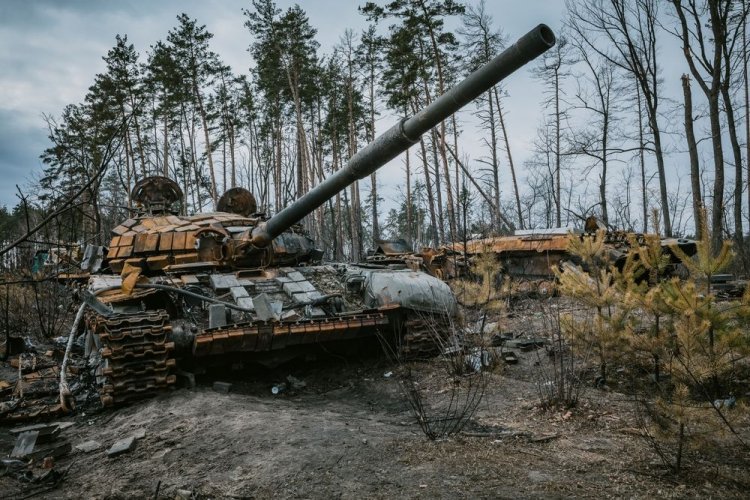Over the two years of full-scale war, environmental damage from Russian aggression has reached $63 billion.
This amount does not take into account all the damage in the occupied territories, as experts do not have access to them, the Ministry of Environmental Protection and Natural Resources reports on Facebook.
It is noted that the environment has suffered the most from military aggression:
- Donetsk region – more than 18 million hryvnias;
- Luhansk region – more than 13 million hryvnias;
- Kharkiv region – almost 11.5 million hryvnias.
The Minister of Environmental Protection and Natural Resources, Ruslan Strelets, said that during the two years of the full-scale war, about 4,000 cases of ecocide were documented. Daily damage to the environment is estimated at UAH 3 billion, in addition to:
- 40% of ecologically valuable territories of Ukraine are occupied;
- a third of Ukrainian forests are damaged by trenches and shelling, located on the front line;
- hostilities caused emissions of more than 150 million tons of greenhouse gases (97 million tons in the first year of the war).
"The Kakhov disaster. World records of missile attacks. Irreversible destroyed ecosystems. 156,000 km2 of mined land. Fires and desertification. There is no corner of the country where the war has not reached. Terrible statistics that we will have to deal with after de-occupation," he wrote.
The Ministry of Environment noted that a working group will be created in Ukraine to work on it methods of calculating greenhouse gas emissions from military operations.
"Today, Ukraine is the first in the world to develop a methodology for calculating greenhouse gas emissions from military actions in order to also bring the aggressor to justice. I expect that in the future this document will be recognized at the international level," said Strelets.
It is planned that the project of this methodology will be presented at the UN Conference on Climate Change in June in Bonn, Germany. This will help draw the attention of the world community to the current problems and consequences of war for the climate and the environment.
Earlier, EcoPolitic wrote, that the International Working Group on the Environmental Consequences of War developed and presented the Environmental Compact for Ukraine (Environmental Compact), which is a road map for holding Russia accountable and restoring the environment.
As EcoPolitic previously reported, Anatoliy Razgon, a consultant on land issues at the Academy of Agrarian Sciences of Ukraine, said that in the area of active hostilities, the levels of heavy metals in the soil exceed the norm by 30 times.





